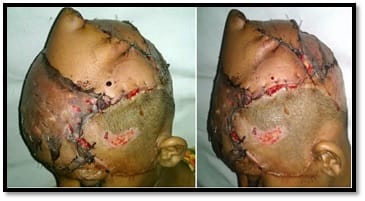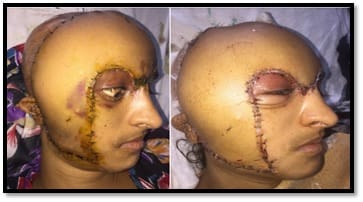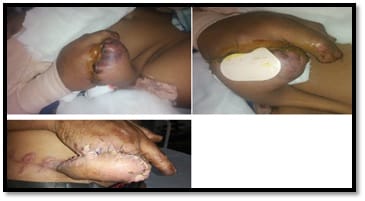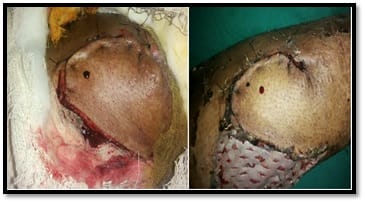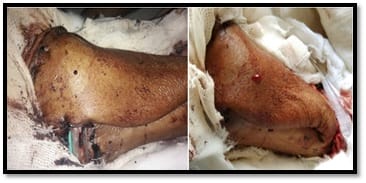Nitroglycerin transcutaneous patch: boon to salvaging post-operative partial flap necrosis, simple and effective method
K. Malviya M.1, Soni S.2*, Gupta D.3
DOI: https://doi.org/10.17511/ijoso.2021.i02.03
1 Manohar K. Malviya, Assistant Professor, Department of surgery, Chirayu Medical College and Hospital, Bhopal, Madhya Pradesh, India.
2* Sameer Soni, Assistant Professor, Department of surgery, Chirayu Medical College and Hospital, Bhopal, Madhya Prdaesh, India.
3 Dipangi Gupta, Junior Resident, Department of surgery, Chirayu Medical College and Hospital, Bhopal, Madhya Prdaesh, India.
Introduction: The majority of surgical complications after tissue transfer surgery (Local transposition of the fasciocutaneous flap, Pedicle flap, Free flap or musculocutaneous flap) are related to vascular thrombosis, which usually occurs within 3 days of surgery. Venous congestion usually results in oedema and darkening of the skin colour. During early venous obstruction, a needle stick will cause rapid bleeding of dark blood and arterial obstruction or spasm will cause delayed bleeding. Patients and methods: This is prospective study was carried out during the period from January 2018 to February 2021 at the Plastic surgery unit-Chirayu Medical College And Hospital Bhopal, India. This study included patients aged 13 to 70 years undergoing reconstructive surgery with flaps (Fasciocutaneous Pedicle flap, Free flap, local transposition flap or musculocutaneous flap) for the wounds at any part of the body. The NTG patch was applied over the cutaneous surface of the compromised flap and then flap insufficiency was observed. Results: In this study total of 50 patients with flaps reconstruction were included. Among which 34 %( 17 patients) had skin changes and 66 % (33 patients) had congested bleed on needle prick. NTG patches were applied on the flap surface at regular intervals. After 1 week follows up, the changes in 82% (41) flaps were reversed back and the flap remained healthy. 18% (nine) flaps had partial and or complete necrosis. Conclusion: There was a marked reduction in partial flap necrosis in patients who received nitroglycerin patch. The flap survival was significantly improved and prevents the re-exploration of flaps. Their application is a simple, safe, and effective way to help salvage the flaps.
Keywords: Flap salvage, Flap necrosis, Post-operative flap congestion, Flap ischemia
| Corresponding Author | How to Cite this Article | To Browse |
|---|---|---|
| , Assistant Professor, Department of surgery, Chirayu Medical College and Hospital, Bhopal, Madhya Prdaesh, India. Email: |
Malviya MK, Soni S, Gupta D. Nitroglycerin transcutaneous patch: boon to salvaging post-operative partial flap necrosis, simple and effective method. Surgical Rev Int J Surg Trauma Orthoped. 2021;7(2):10-16. Available From https://surgical.medresearch.in/index.php/ijoso/article/view/218 |


 ©
© 